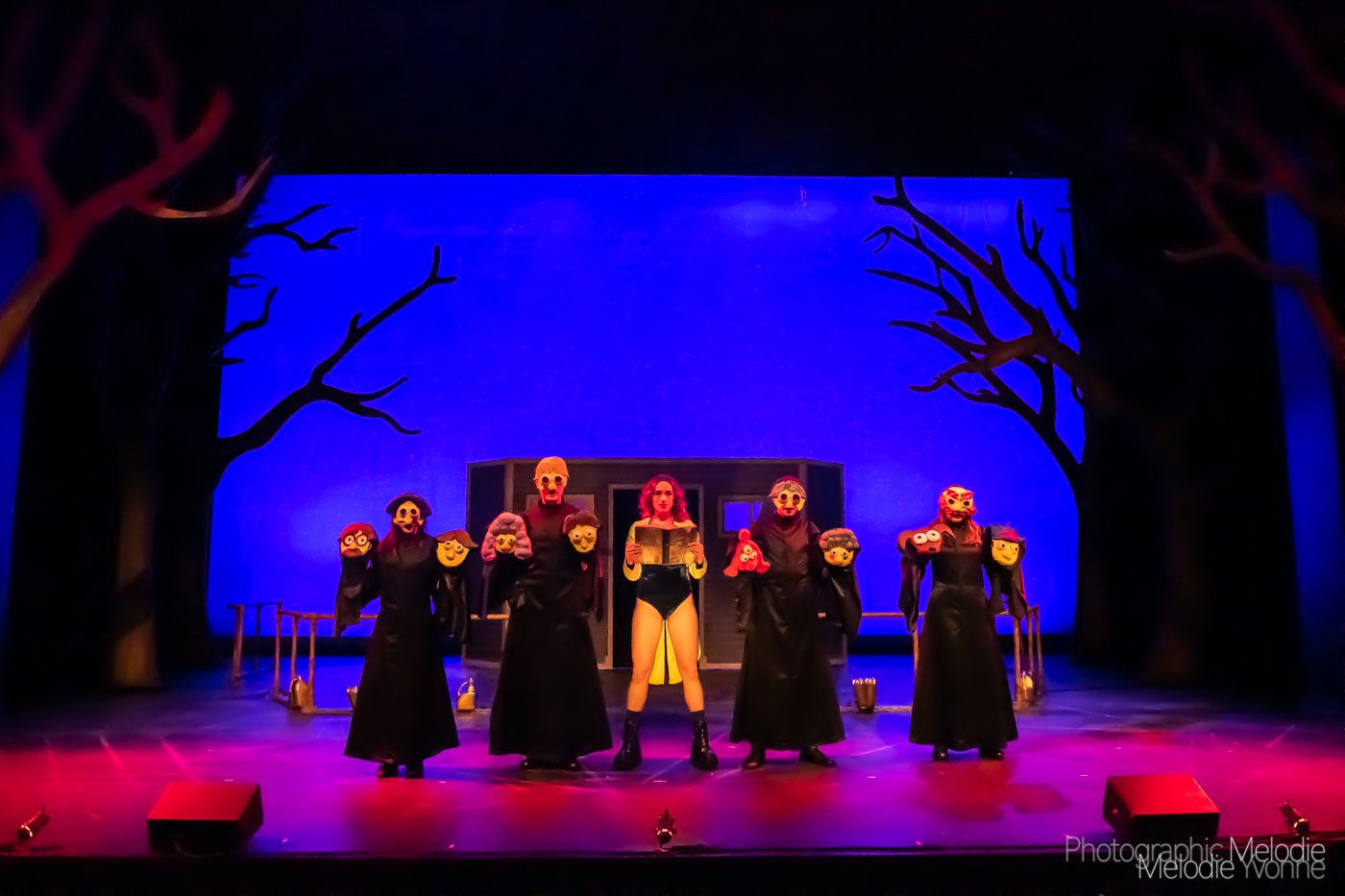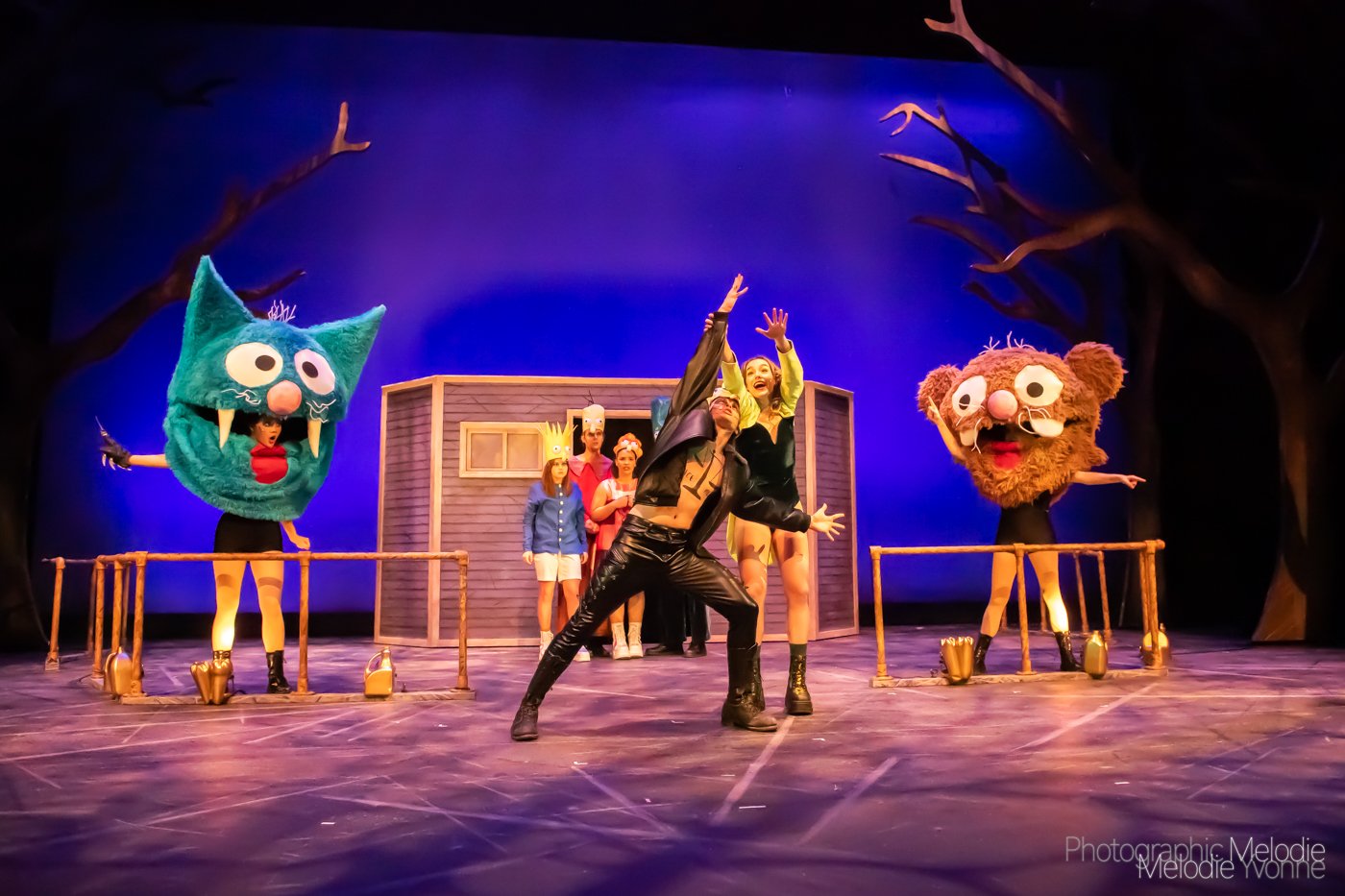Mr. Burns: A Post-Electric Play
By Anne Washburn
Purdue University
Directed by Zack Neiditch
February 2023
Scenic Design by Ryan Douglass
Properties Supervision provided by Jake Wood
Properties Assistance provided by Justin Baker
Stage Management led by Darby Blum
This design for Mr. Burns: A Post-Electric Play relied on lots of set dressing to help establish the setting in each of the three acts. Due to the post-apocalyptic nature of the story, the scenic designer wanted to use lots of found objects and trash in the props and set dressing, emphasizing that the characters are making do with what they have available. The majority of these objects were used to dress three movable “junk” platforms that moved around onstage. The objects were a mixture of stock items and furniture, donations, and Simpsons Easter Eggs as a nod to the heavy Simpsons references throughout the play. Miscellaneous trash was also used to create decoration on scenery such as car accessories and footlight covers.
Candle TV
Act 2 specifies that the characters have filled an old CR-TV with candles for a glowing effect. My assistant procured an old TV from a friend and removed the screen and electronics so that we could use the plastic shell. Using a variety of remote-controlled LED candles, we filled the shell and stuck them together with putty so they would stay in place. For the base, we drilled holes in the shel and ran long bolts through the openings in an old milk crate. The crate was then bolted to two plastic furniture dollies so it could be moved on and offstage with ease. The vents in the TV shell were covered with diffusion gel, so that audience members could not see straight through them. The shard of mirror that gets inserted was cut from a scrap of existing acrylic material so that it was safe for the actor to handle.
Simpsons References
Krusty Burger Fun Map
For the “Cape Feare” FBI interrogation scene, the script called for a pull-down map of Terror Lake, where the Simpsons are being relocated to escape Sideshow Bob. Instead of drawing a map from scratch, the scenic designer chose to use an image of a map from a different episode of the show. The original screenshot provided was very low quality, so I redrew it in Procreate to make the lines cleaner and easier to see. In keeping with the theme of using found objects throughout the show, I decided to use an old bedsheet and attach it to a cheap window shade. Instead of using a more accurate transfer method, I decided to just eyeball the lines and leave any mistakes or errors, as many of the Simpsons elements are meant to be incorrect. Once the design was laid out, I gave each colored section a number and enlisted help from undergraduate lab students to fill it in. It took a few layers of paint to ensure that the layout lines were mostly invisible from a distance. Once the color was on, we lined it with black, and then later added some white highlight to make certain details stand out against all the busy colors. The map was then cut out, hot glued to the vinyl shade, and then installed on the flat.
Junk Maggie Doll
For Act 3, we wanted Marge to have a little Maggie doll to carry around. I used a donated milk jug for the body, and sewed a scrap of blue fabric around it for her dress. I used another piece of the same fabric for her hair bow. The head was made out of upholstery foam and scrap fabric, with bottle cap eyes and a pacifier made out of the cap of a Coke bottle and a washer. A dowel was stuck down the back of the head and into the bottle for stability, and then hot glued at the neck of the bottle to hold it in place.
Miscellaneous Simpsons Easter Eggs
Because this play draws so heavily on Simpsons plots and characters, the scenic designer wanted as many easter eggs peppered into the props and set dressing as possible. Some were specific references to the “Cape Feare” episode, like Bart’s chalkboard lines from the intro, Sideshow Bob’s threatening letters, and Scratchy wearing a Freddy Krueger-style glove in Act 3. Others were more generic, like the title card signs indicating the passage of time, a “Welcome to Springfield” sign, the sailboat painting, and an orange throw blanket over the couch inspired by the orange couch in the Simpsons’ living room.
Aging and Distressing
The play takes place in three distinct time periods: several months after a global nuclear meltdown, seven years after that, and then seventy-five years after that. The passage of time needed to be clear not only in the script, but in the props used onstage.
In Act 1, it has only been a few months since the world ended, and most items are still in decent shape. Things may be slightly worn from use, or dirty from being outside. Somethings have clearly been repurposed for survival purposes, such as the bottom of a storage barrel that now houses the characters’ campfire.
Act 2 features the characters as a traveling performance troupe, seven years later. Most of the passage of time is shown in their costumes, but some of it shows in the props and scenery they use in their performances. Some of the set dressing props were made to look new purposefully, as if the characters had created them recently from whatever materials they had.
Act 3 takes place seventy-five years after Act 2. Few hand props were used in Act 3, but what did appear was distressed to look aged and worn down over time. Colleen’s notebook, which we had seen earlier in the show, is now beaten and worn down, showing that it has been in continuous use since we first saw it in Act 1.





















































